| TOPICS WITHIN THIS PAGE OTHER PAGES ON THIS SITE: As of 2003, about 290 million tires are discarded in the U.S. every year (roughly one per person). Nearly 45% of these scrap tires (130 million) are used as "Tire Derived Fuel" (TDF), which often involves burning the (usually shredded) tires alongside conventional fuels like coal (usually no more than 10-25% TDF is used when co-firing with coal). Tire manufacturers, Tire Derived Fuel producers (tire shredders) and TDF users (burners) and government agencies promote burning TDF as a solution to the dire problem of waste tires. It is common knowledge that burning tires in the open is extremely harmful to human health and the natural environment. The fumes emitted are packed with the many toxic chemicals that tires contain (including volatile organic compounds such as benzene, metals such as lead, polycyclic aromatic hydrocarbons such as benzo(a)pyrene, and synthetic rubber components such as butadiene and styrene). Additionally, the chlorine content in tires leads to the creation of dioxins and furans (which are extremely toxic chemicals) when tires are burned. Yet, users of Tire Derived Fuel are confident that their machinery (which usually is not even designed for burning tires) and the combination of tires with traditional fuels (like coal) will render the incineration process harmless. According to the Auburndale Recycling Center, Inc, a Wisconsin-based for-profit corporation that sells tire chips for incineration, "Most individuals are confused about the difference between a "burning tire" which emits black smoke and damages the environment, and the use of scrap tires as a fuel source for power companies. Citing government approval of Tire Derived Fuels, Auburndale ignores the scathing critiques that reputable scientists like Dr. Neil Carman and Dr. Seymour I. Schwartz have written in response to the "junk science" and stacked statistics behind the rubber-stamp approval of tire derived fuel. These experts, along with other scientists, ecologists, and public interest groups, have uncovered the truth behind the propaganda -- that tire incineration by any method is NOT safe. Problems with Test DataSupporters of Tire Derived Fuel claim that substituting 10-25% TDF for coal or natural gas in incinerators/boilers does not significantly alter the chemical content of the emissions. To justify their claims, TDF advocates point to government studies like the Environmental Protection Agency's 1997 report "Air Emissions from Scrap Tire Combustion" 2, which states that:
However, there are many problems with this. First of all, the test data is not an accurate measure of the actual day-to-day emissions of a given plant. As reported by Greenpeace, "Trial burns are generally considered a poor indicator of operation on a daily basis: during trial burns when regulatory authorization is at stake and government officials are at the site, variables such as wastefeed, temperature, oxygen flow, and pollution control device efficiency are carefully maintained to optimize performance. On a day-to-day basis, emissions may be considerably higher." 3 Dr. Neil Carman confirms this: "But during stack tests of TDF, cement kilns will do several things to make emissions and combustion look good-to-decent for such facilities:
Apart from this it should be kept in mind that facilities naturally wear down with use. It is unlikely that any incinerator could continuously operate for a long period of time at the same level of performance as it did during the initial testing period. Another disturbing aspect of tire incineration, particularly in cement kilns, is the occurrence of serious "upsets." As Dr. Carman explains,
Aside from all of this, it should be noted that a number of tests conducted by or on behalf of the Tire Derived Fuel industry and its supporters have been notoriously shoddy in terms of scientific method, vision, language, and conclusions. As mentioned earlier, such reports have been repeatedly blasted by a number of reputable scientists and organizations. Tire Incineration in Paper MillsThe aforementioned EPA test was not even performed on an actual operating plant but rather on a scaled-down simulator. Such devices are obviously bound to be more stable than large industrial incinerators that are used on a daily basis over a period of years. Importantly, the EPA simulator isn't even designed to represent the type of incinerators typically used in paper mills, which often use Tire Derived Fuel. Tire incineration in paper mills poses special concerns. The North Carolina Division of Pollution Prevention and Environmental Assistance, a government agency that is generally uncritical of tire incineration as a whole, still has this to say about tire incineration in paper mills:
What we don't knowcan hurt us.Another major concern about Tire Derived Fuel is the enormous lack of knowledge about a wide range of potential dangers. This has been painfully apparent even in the pro-TDF reports. What follows is a selection of quotes from the California Air Pollution Control Officers Association (CAPCOA) report. The quotes were originally isolated for analysis by Dr. Seymour I. Schwartz, a professor of environmental science and policy at University of California at Davis.
In his letter to the California Integrated Waste Management Board, Dr. Schwartz also notes that "Virtually nothing is known about the dose-response functions for important categories of health effects, particularly disruptions to the hormone systems of humans, which could produce life long damage in developing infants. Also, virtually nothing is known about the health effects caused by combinations of toxic chemicals that are emitted when burning tires. Toxic Pollution from Burning Tire Derived FuelSo far we have looked at the disturbing unreliability of the existing pro-TDF studies, the special problems posed by burning tires in paper mill boilers, and the alarming lack of knowledge about a wide range of potential dangers that tire incineration may pose to the health and safety of our communities and the environment. This next section will take a closer look at the existing record and find that even based on the limited knowledge that exists, it is already clearly evident that tire incineration is dangerous. Below is a breakdown of some of the condemning test data, organized by chemical groupings: Dioxins and Furans Dioxins are highly toxic and cause serious health problems, including infertility, learning disabilities, endometriosis, sexual reproductive disorders, birth defects, damage to the immune system and cancer. Dioxins and furans are chemicals that are created by burning chlorine (or other halogens, like fluorine or bromine) in the presence of hydrocarbons and oxygen. Hydrocarbons (the bulk of the TDF itself, as well as coal, wood or gas it's co-fired with) and oxygen (from the air) are readily available when TDF is incinerated. Dioxins and furans are produced by tire incineration because tires contain chlorine. The manufacture of synthetic rubber for tires uses up to 25% aromatic extender oils, a toxic waste product of oil refining which can contain chlorine. Another possible source of chlorine in tires is through the use of the "salt-bath" vulcanization process, a process where the rubber is made more elastic.10 One major source of chlorine in tires is their halogenated butyl rubber liners. The addition of chlorine or bromine (the latter used more widely for truck tires) to the butyl rubber gives liners the air-impermeability required to maintain proper tire inflation. Certain metals present in tires (such as copper, iron, manganese, nickel, sodium and zinc)10 serve as catalysts for dioxin formation, providing a surface on which dioxins can readily form during and after the combustion process.15 The greater chlorine content of tires combined with the presence of these metal catalysts is the likely reason why burning tires with coal has been found to produce more dioxin pollution than burning only coal. Increased dioxin emissions have been found in most of the tests conducted where dioxin emissions at facilities burning 100% coal were compared to those co-firing 4-30% TDF.
Other Chorine-Based Pollutants In addition to dioxins and furans, a number of other harmful chemicals are emitted from incineration of chlorine-based substances in tires. Among the halocarbons emitted during tests at TDF incinerators are PCBs, dichlorobenzene, trichlorobenzene, tetrachlorobenzene, hexachlorobenzene, chlorophenol, and dichlorophenol, which are all highly toxic compounds and are all either proven or suspected to be carcinogenic.31 Non-Chlorinated Hydrocarbon Pollutants Tires also contain petrochemical feedstocks, including butadiene and styrene (the latter being a benzene derivative). The chemicals are both carcinogens. Other carcinogenic benzene derivatives, such as M, P and O-Xylenes are sometimes found in tire derived fuel as well.4 Polycyclic Aromatic Hydrocarbons (also known as Polynuclear Aromatic Hydrocarbons) is a name applied to over 100 chemicals containing multiple benzene rings that are difficult to break down. PAHs are known to cause cancer in rats and "may reasonably be expected to be carcinogens" in humans as well, according to the Department of Health and Human Services. Heavy Metals Tires contain around 20 different metals, none of which can be destroyed by burning them, since they're elements. Metals known to be in tires include aluminum, antimony, arsenic, barium, beryllium, cadmium, chromium, cobalt, copper, iron, lead, magnesium, manganese, mercury, nickel, selenium, silicon, tin, titanium and zinc.2,13,33,34 Zinc is present in particularly high amounts, since zinc oxide is used in the vucanization process. Most of them, including arsenic, lead, mercury, and chromium VI, are quite toxic to humans and can also wreak ecological havoc on aquatic wildlife if even a small quantity finds its way into a body of water. The test data for metal emissions varies widely for each metal, but the overall trend shows increases in most metals when TDF is burned along with coal.2,3,16,16,17,25,26,28 This evidence clearly demonstrates that tire incineration releases a variety of toxic pollutants into the air, posing a dangerous and potentially deadly threat to human health and the environment. Alternatives to Tire Incineration Footnotes:
|
Reuse and recycle. It’s a message that’s been hammered home; unfortunately, it isn’t always feasible. The automobile tire is the perfect example. Even hybrid cars need four of them apiece, and the global love affair with the automobile isn’t ending anytime soon. Worldwide, about a billion tires are sold annually, and eventually all get tossed. In the United States alone, we throw away 300 million tires a year—one for every man, woman, and child. These castoffs are a huge source of automotive-related pollution—the average used tire weighs 22.5 pounds and contains about two gallons of fuel, as well as other combustible carbon compounds. Dumped into huge stockpiles, tires harbor vermin, contribute to the spread of disease by creating mosquito breeding grounds, and feed huge fires: In August 1998, a grass fire ignited 7 million tires near the town of Tracy in California’s San Joaquin Valley, sending a plume of soot and noxious gas thousands of feet into the air.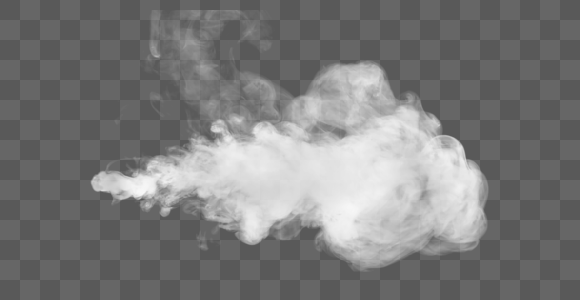 State authorities originally expected the fire to burn for about two weeks, but it endured for two and a half years. Cleanup was completed only in 2006, at a cost of $19 million.
State authorities originally expected the fire to burn for about two weeks, but it endured for two and a half years. Cleanup was completed only in 2006, at a cost of $19 million.
Tires are so difficult to dispose of because they don’t easily become anything else. Up to now, any effort to recover the raw materials used to make tires has failed beause more fuel is needed to decompose the tire than is used in making a new one.
Engineers have been making some progress in dealing with this refuse, using old tires as raw ingredients for new construction materials for roads and recreation facilities. But ironically, the best solution may be simply to use old tires to do what they do best: burn.
According to Michael Blumenthal, vice president of the environment and resource recovery group of the tire industry’s Rubber Manufacturers Association (RMA), 1992 was the first year that processors began to dip into the scrap tire inventory to convert it into new products, mixing crumb rubber and tire dust—ground-up rubber tires—with a urethane binder to make sidewalks, playground surfaces, and basketball courts.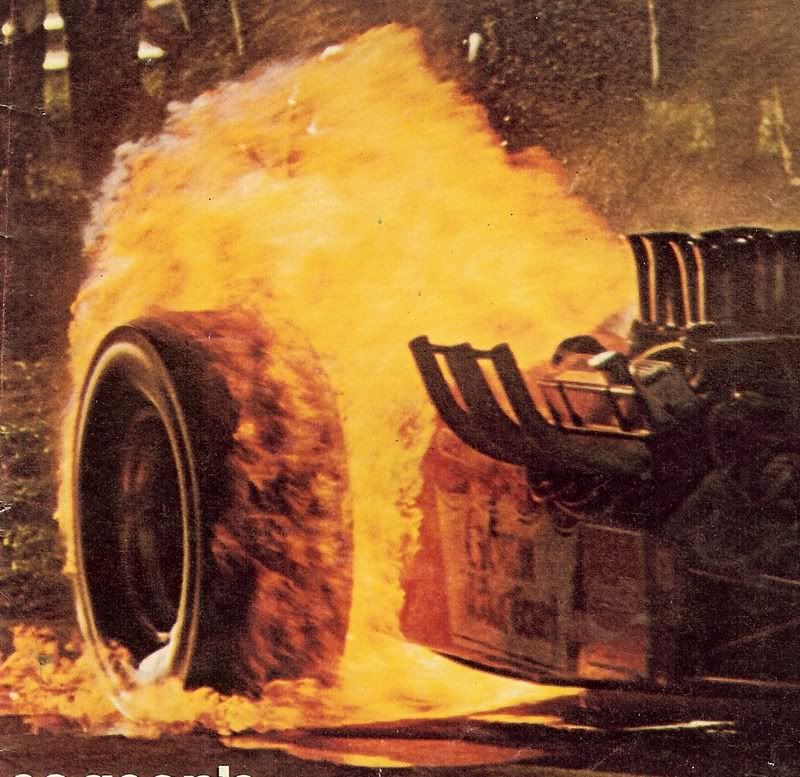 Many engineers now construct new roads using tire chips for backfill and insulation and to give asphalt added springiness and longer life. Whole tires are used to build breakwaters, barriers, and berms. In Milpitas, California, engineers used 660,000 shredded tires as lightweight roadbed to support the Dixon Landing Road interchange on Interstate 880.
Many engineers now construct new roads using tire chips for backfill and insulation and to give asphalt added springiness and longer life. Whole tires are used to build breakwaters, barriers, and berms. In Milpitas, California, engineers used 660,000 shredded tires as lightweight roadbed to support the Dixon Landing Road interchange on Interstate 880.
Because of innovations like these, figures from the RMA show the percentage of scrap tires that have been recycled in the United States is rising, from virtually zero in 1990 to 30 percent in 2005. The RMA’s counterpart across the Atlantic, the European Tyre & Rubber Manufacturers’ Association (ETRMA), recorded comparable achievements, with Europe recycling 27 percent of its scrap tires in 2004. This progress is helping make a dent in the stockpiles of old tires, at least in developed countries. In 1990 the United States had an estimated 1 billion old tires lying around. By 2005 (the most recent year for which statistics are available), the United States had slashed that figure to 188 million, thanks to both recycling and using tires as industrial fuel.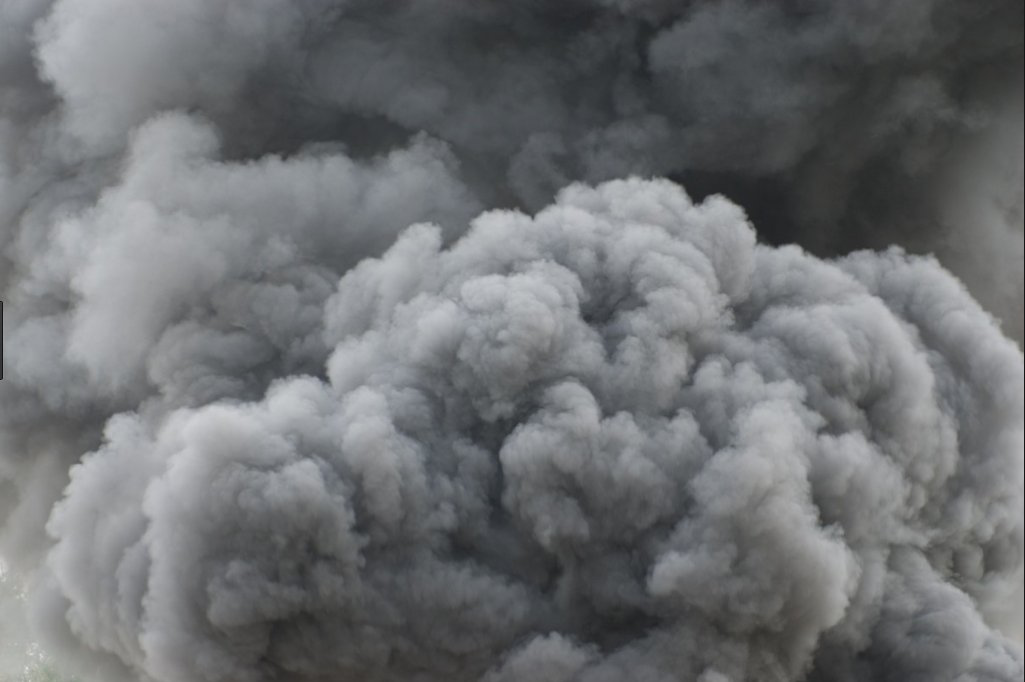
Vern Reum is one of the leaders in the effort to banish tires from the dumps and recycle them into productive use. Reum, president and owner of Tire Depot in Polson, Montana, has been in the scrap tire business for 18 years and now handles some 1.2 million of them per year. His company collects tires from Montana, Idaho, Washington, Oregon, and Wyoming, making most of its money by charging dealers for transporting the tires and for disposal—a per-tire assessment known as a tipping fee.
Ancient traditions are not betrayed in the Perechyn region. Usually, a spacious place is chosen from prepared stingrays (they are taken by cars, carts) to make a fire. Pastures are the most suitable for the Sabbath fore-great hearth. The boys scatter the fire late at night and guard the "pillar of fire" until the morning. Have fun all night around the campfire, play cards.
Pastures are the most suitable for the Sabbath fore-great hearth. The boys scatter the fire late at night and guard the "pillar of fire" until the morning. Have fun all night around the campfire, play cards.
Unfortunately, no matter how ancient this tradition may be, but it goes back to the pagan period, ecologists and priests forbid burning tires. After all, the smoke from burning rubber is extremely harmful, poisoning the environment.
People say that after such "poisonous fires" their gardens are covered with black ash, because the cloud of smoke, along with the wind, reaches good distances. Moreover, it is forbidden to spread fire in open areas now, when a full-scale war is going on in Ukraine. However, most people ignore these prohibitions. They are not strictly enforced by the young people who prepared the tires for burning this year.
Without betraying tradition, they commit a crime.
According to residents of the Perechinsky district, some owners stole car tires from the farm in advance. People sounded the alarm.
People sounded the alarm.
“We already discovered the theft on Friday morning,” says Ms. Maria from Turja-Remet. “They stole a tire from the flower bed where she wanted to plant flowers,” the resident adds. I understand that this is a tradition, although I am against smoking tires. People have already exploded, the woman is indignant.
By the way, in Turya-Remet, for many years in a row, local youth burned tires in the Gorbki tract (where pastures were located). Traces of a large-scale fire from stingrays can be observed here and now - a lot of ash is hidden under a film of moss. At the same time, not so long ago, this area suffered from dry burning - I had to witness terrible consequences.
Previously, old-timers say, wood was used for this tradition, not rubber. Each owner gave to "bend" something unnecessary from the estate that burns well - unnecessary boards, chairs. In addition, they carried diseases from the forest. In the last ten years, the fashion for burning old tires from cars has gone - they burn more wood and smoke the wrong word.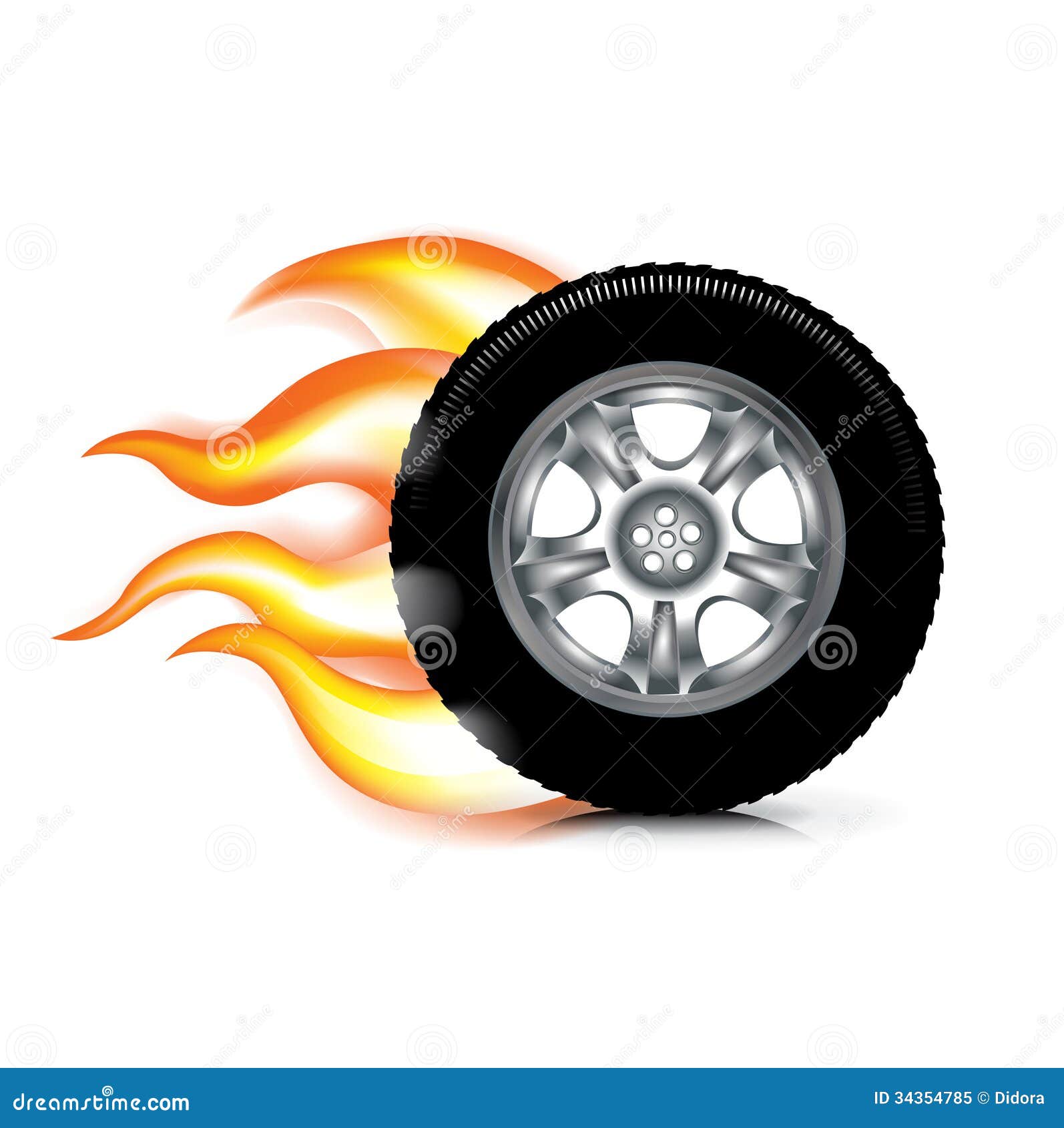 However, such a tradition of using tires is completely contrary to common sense and parents should warn children about this, and not vice versa.
However, such a tradition of using tires is completely contrary to common sense and parents should warn children about this, and not vice versa.
So let's keep the tradition, not the "fashion" of burning tires before Easter.
Recall that Transcarpathians prepare butter sheep for Easter - a real masterpiece in a basket (PHOTO)
Read on GK: An incredible “refreshing find” is located in a tract in the Perechinsky district (PHOTO)
This material is also available in the following languages:Ukrainian
Any car tire has its own service life, and few car enthusiasts come up with the idea to shorten this life. Yes, and it’s not very easy to do this, if you don’t remember about radical methods using sharp and cutting objects. In preparing this article, we turned to a professional racer for help, who can change several sets of “shoes” on his car in one day. As you already understood, today we, together with the online hypermarket 21vek.by, continue to talk about the most important consumable in a car - tires. This is the only part of the car that constantly touches the road surface, and therefore an extremely important element of active safety. Do not do what this article is about, and your tires will last a long time, retaining their characteristics.
In preparing this article, we turned to a professional racer for help, who can change several sets of “shoes” on his car in one day. As you already understood, today we, together with the online hypermarket 21vek.by, continue to talk about the most important consumable in a car - tires. This is the only part of the car that constantly touches the road surface, and therefore an extremely important element of active safety. Do not do what this article is about, and your tires will last a long time, retaining their characteristics.
If anyone does not know, burnout is when the car is stationary and the drive axle (usually the rear) is slipping. It seems that this is the easiest way to "kill" the rubber. But try to make the drive axle rotate while the other one holds the car in place with the help of a brake. You need powerful brakes, a revving engine, and driving skills.
On a motorcycle, it's easy to burnout, but on a car, you have to try harder. But the tires will run out very quickly. By the way, for some production cars, for fun, they put the burnout option, which allows you to block the front wheels and burn the rear wheels a little. Pressed the button, turned on D - and push yourself on the right pedal. There is a similar option, for example, in the Ford Mustang.
By the way, for some production cars, for fun, they put the burnout option, which allows you to block the front wheels and burn the rear wheels a little. Pressed the button, turned on D - and push yourself on the right pedal. There is a similar option, for example, in the Ford Mustang.
In general, burnout is not just a useless blowing of smoke to the delight of onlookers. Racing drivers sometimes warm up their tires in this way before starting. For example, this phenomenon is often found in professional drag racing. Before you go on a long straight and set a quarter-mile record, you need to “stretch” (that is, warm up) the tires a little. And now we come to the second way to shorten the life of car tires - drag races. Those who do it professionally know that expensive sports slicks wear out very quickly.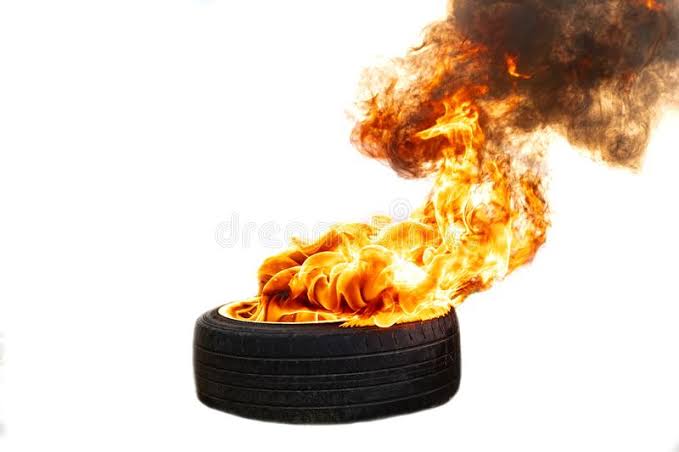 But those who like to start with a squeal of rubber from a traffic light in the city should also remember that the life of tires is significantly reduced in this way.
But those who like to start with a squeal of rubber from a traffic light in the city should also remember that the life of tires is significantly reduced in this way.
It's time to meet our today's hero. Anton Shenderov is a professional drifter and also owns a Tony Motors service station. The guy has several cars on which he moves not only on public roads. The main "working tool" is the Nissan 200SX - one might say, a classic in the world of drifting. The power of the machine is about 500 liters. with., which allows you to mercilessly destroy the rear tires in a matter of minutes.
- When we talk about the durability of car tires in drifting, everything directly depends on the power of the car. If the engine output is relatively modest, then in races you can kill a couple of tires in two to three hours. We are talking about brand new tires from the store. If the engine output in a racing car exceeds half a thousand horsepower, then it is enough for an athlete to make two passes of 40 seconds, and the rubber goes into the trash, - says a professional racer.:max_bytes(150000):strip_icc()/information-about-kreteks-and-clove-cigarettes-2825286-5c097c0dc9e77c00014bf2e1.png)
It must be taken into account that it is impossible to participate in drifting on any tires. According to the athlete, the cheapest tires that are suitable for professional competitions cost from $100 apiece. It turns out that the most powerful cars spend from $ 200 in 40 seconds. Well, or $5 per second. It is not surprising that tires are the main consumable in drifting. As you understand, this hobby is not cheap, and without sponsors, only very wealthy riders can participate in side sliding competitions.
For ordinary motorists, a reasonable question may arise: if the rear tire is used up so quickly, is it possible to transfer the front tire to the rear axle and drive a couple more laps?
- In fact, the front rubber has completely different purposes, and, accordingly, different properties. In order for the front wheels to have good grip and work properly, you need very expensive tires - more expensive than the rear ones. Therefore, it will not work to throw the wheels from the "muzzle" to the rear axle.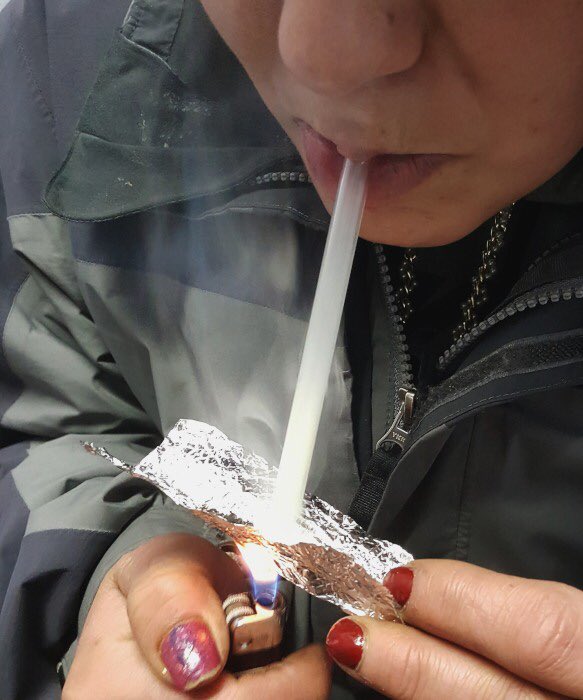 But I note that the front tires are enough for half the season, or even the season: there the rubber consumption is an order of magnitude lower, - explains Anton.
But I note that the front tires are enough for half the season, or even the season: there the rubber consumption is an order of magnitude lower, - explains Anton.
Top league drift drivers can burn 50-80 tires in a weekend.
With regard to civil use of machines, it is possible to reduce the life of tires without slowing down when cornering. Here the dependence is simple: more rubber squeal during turns or braking - tires will last less seasons.
It is obvious that the level of tire wear in motorsport is affected by the configuration of the track on which the competition takes place. But not everything is so clear-cut here. In normal circuit racing, drivers cannot influence the distribution of the load on the rubber: if there are more left turns on the track, then the tires will wear out more on the outside (right) side. In drifting, drivers themselves change the number of left and right turns, simply by “shifting” the car back and forth, so the configuration of the track plays a smaller role than in other disciplines. But what is really very important is the quality of the road surface.
In drifting, drivers themselves change the number of left and right turns, simply by “shifting” the car back and forth, so the configuration of the track plays a smaller role than in other disciplines. But what is really very important is the quality of the road surface.
- On old pavement, stone chips can literally gnaw through rubber in pieces, so if we are talking about tire durability, I would say that for drifting, the quality of the asphalt surface plays a more important role than the track configuration. As for the number of left and right turns, here you can monitor the wear of the rubber and, in which case, change the left and right tires in places, extending their life, , the athlete says.
Due to the quality of the road surface, rubber can be damaged even without any competition: a deep hole or a foreign object on the pavement can tear even new tires. With a strong impact on a hard corner, a "bun" may form on the tire, which will also require its replacement.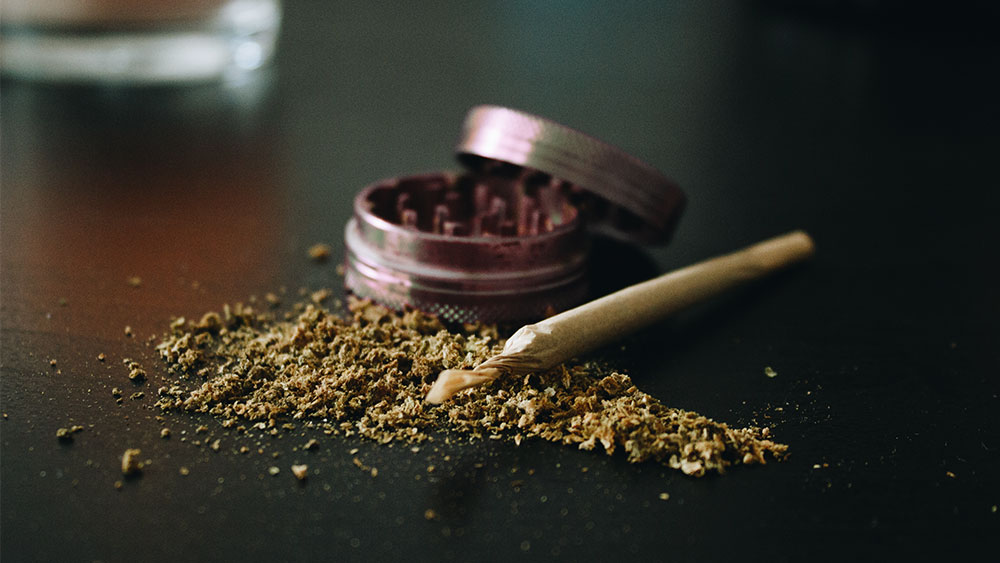 Especially in the spring on the road, you need to more closely monitor the quality of the canvas. In addition to tires, the more expensive element of the car, the suspension, also suffers in the battle with bumps. And faulty chassis elements are another way to “kill” rubber.
Especially in the spring on the road, you need to more closely monitor the quality of the canvas. In addition to tires, the more expensive element of the car, the suspension, also suffers in the battle with bumps. And faulty chassis elements are another way to “kill” rubber.
By the way, if one tire is suddenly damaged, and the second has a high degree of wear, it is better to change a pair. Otherwise, there is a risk that during emergency braking (or a quick start), the new rubber will have a better grip, and the car will turn around. This is especially true for older cars without modern ABS and ESP systems.
- We drift for entertainment, so when the pavement is warm, there is more entertainment, because there is more so-called "hold". In fact, we are constantly fighting to ensure that the rear wheels cling to the asphalt as much as possible. Accordingly, the hotter the asphalt, the better for the pilot. But not better for the tires - they wear out faster if we run on hot surfaces, of course. 0064 - a drift pilot shares his experience.
0064 - a drift pilot shares his experience.
"Civilian" motorists should also remember that on hot summer asphalt, rubber wear increases significantly.
Summer and winter tires have different composition. In particular, for "winter" a mixture with a larger amount of rubber is used - this allows you to make the tire softer. Most effectively, such rubber works out at sub-zero or near-zero temperatures. For the summer season, such a tire is not suitable. Even if you drive carefully and don't notice a difference in operating conditions, remember that heat and summer sun will wear down a winter tire faster.
- In summer, winter tires wear out much faster. I think one summer season for winter tires can be equated to two or even three cold seasons. As for all-season tires, it is clear that this is a compromise. It has its pros and cons. I would not rule out "all season": after all, it allows many people to save money. You just need to approach this issue with your head and understand what such rubber, , is capable of, advises Anton.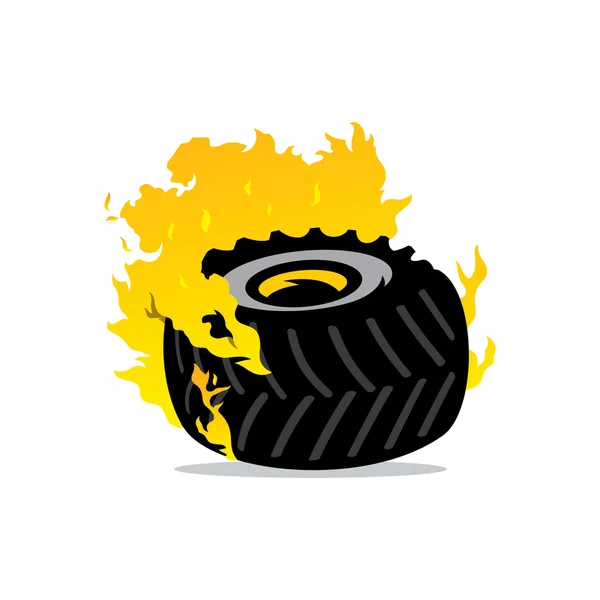
Affects the life of tires and how they are stored.
— Car racers are well aware that if slicks or semi-slicks are stored outdoors or in an unheated room in winter, the properties of the rubber deteriorate, it tans and does not demonstrate the properties that a similar tire model that was stored correctly, — says Anton.
According to the expert, it is storage conditions that affect the safety of rubber: tires should winter in a dry and preferably warm room. At the same time, there is not much point in walking and turning the wheels every month (there are such motorists).
Incorrect tire pressure can kill or at least shorten its life. Here everything depends on the conscience of the driver. The minimum program is every time you get into the car, go around it and visually run your eyes over the wheels: a heavily flat tire will be visible to the naked eye. If you drive even a couple of kilometers on a completely flat tire, you can throw it away.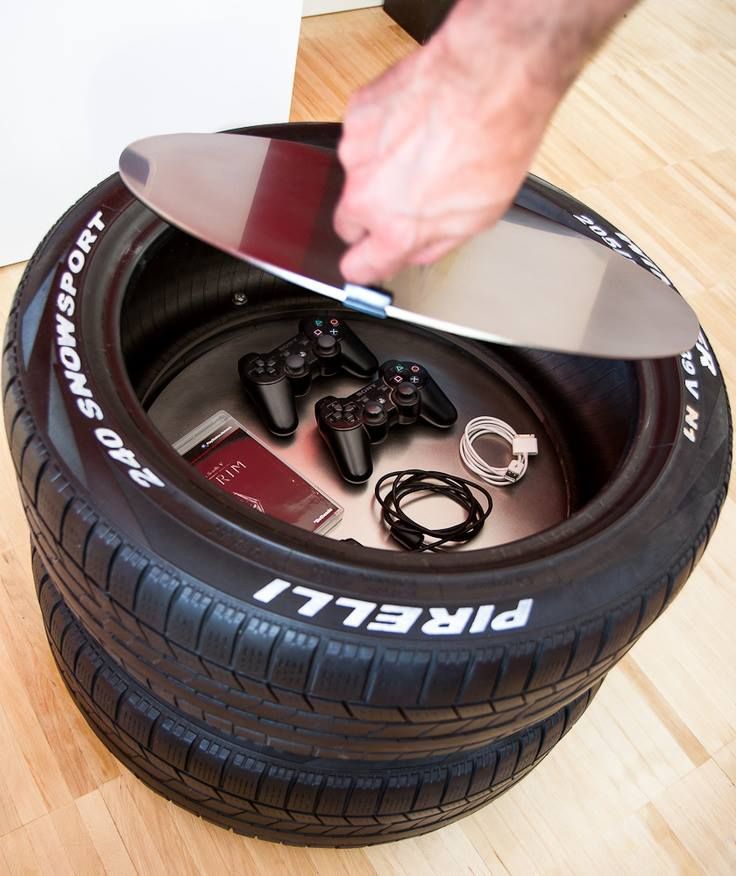 Modern cars have pressure sensors that help a lot in this matter - the main thing is not to ignore the warnings of the on-board computer.
Modern cars have pressure sensors that help a lot in this matter - the main thing is not to ignore the warnings of the on-board computer.
- I also advise you not to neglect the recommendations of specialists in tire fitting. When you are told to clean the rust from the wheels, use sealant or replace the tire inflation nipples, this is not just. Even a small nuance can lead to the fact that the tire will constantly deflate. In addition, I advise you to do a basic check of the car at least once a week. By basic check, I mean checking the level of technical fluids, pressure in the wheels, inspecting the brushes, , the expert advises.
According to Anton, any professional racing driver has a pressure gauge. It is one of the most important measuring instruments in motorsport. Another non-obvious advice from our interlocutor is, if possible, check the spare tire (if you have one) at a tire fitting. It’s good if the wheel stored in the trunk is never useful to you, but it’s better that it is always “ready”.
Year of manufacture of a tire is one of the most important parameters when it comes to tire life.
— From my racing experience, I can say that the difference between a tire that has been in storage for three years and the same tire that has just left the factory is very big. This applies to both driving characteristics and service life. In my opinion, if the tire has been in the store for more than three years, it should be sold at a discount and the buyer should be warned about this. I have already concluded for myself that tires that are more than five years old are no longer good for anything. And it doesn't matter if they drove this rubber or not,0064 - says the race car driver.
An excellent selection of tires for the season and other goods for cars from 21vek.by - on the website of the online hypermarket, as well as in the Onlíner Catalog. Delivery to any point in Belarus, own pick-up points in Minsk and regions, payment by any convenient method, including in installments, discounts on tire fitting - with 21vek.